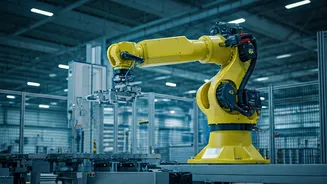Pushing for Presence
Many companies are actively encouraging, or mandating, a return to the office, believing that in-person collaboration is vital for innovation and team
cohesion. Leaders often cite the benefits of spontaneous interactions, enhanced communication, and the easier cultivation of company culture. They also contend that physical presence can improve employee focus and accountability, leading to greater productivity. The emphasis is on recreating a dynamic, collaborative environment that promotes direct engagement and problem-solving, which is perceived to be harder to achieve in a remote setting. The return-to-office mandates are presented as essential to revitalizing company culture and maintaining competitive advantage.
Remote Work Resistance
In response to company mandates, a significant number of employees are pushing back against the return-to-office trend, highlighting the flexibility and autonomy provided by remote work. Many appreciate the improved work-life balance, reduced commuting time, and the potential to save money. The ability to manage personal responsibilities more easily, alongside the perceived increase in productivity due to fewer distractions, is also a significant factor. Employees are advocating for flexible work arrangements, arguing that remote work allows them to achieve a higher level of job satisfaction and can boost overall mental well-being. This perspective underscores the value placed on personal choice and the ability to tailor work to fit individual needs.
Impact on Productivity
The debate regarding office presence frequently circles around the impact on productivity levels. Proponents of office work argue that face-to-face interactions foster quicker decision-making and efficient collaboration, particularly for complex projects. They often cite studies that suggest a decline in productivity in fully remote or hybrid models due to challenges with communication and team coordination. However, others suggest that remote workers can often be more focused and productive when undisturbed by the usual office environment. They may experience fewer distractions and control over their work environment, leading to increased output. The debate therefore becomes a nuanced one, with the optimal arrangement potentially varying across roles, industries, and individual preferences.
Work-Life Balance
A pivotal factor influencing employee attitudes toward office mandates is the impact on their work-life balance. Remote work often grants employees greater control over their schedules and commitments, making it easier to manage personal and professional obligations. This increased flexibility can result in reduced stress and enhanced well-being. However, the blending of work and personal life can present challenges, such as blurred boundaries and potential for overwork. In-office work, while demanding set schedules, can provide a clearer separation between work and personal time, potentially aiding employees in maintaining a healthier equilibrium. Finding the correct balance is vital for worker satisfaction and overall quality of life, requiring the alignment of individual needs with company expectations.
Future Workplace Trends
The future of the workplace seems to lie in a hybrid model, combining in-office presence with remote work flexibility, as both employees and employers seek the most productive and agreeable strategies. Companies are experimenting with flexible arrangements, offering varying degrees of remote work based on job roles, team requirements, and individual preferences. Some organizations are investing in new technology and office designs to support both in-person and virtual collaboration. The ongoing evolution of work models points toward a focus on outcomes rather than just location, with organizations striving to establish a culture that prioritizes employee well-being, while simultaneously reaching business objectives. The goal is to design a workplace experience that's both productive and appealing to a diverse workforce.











